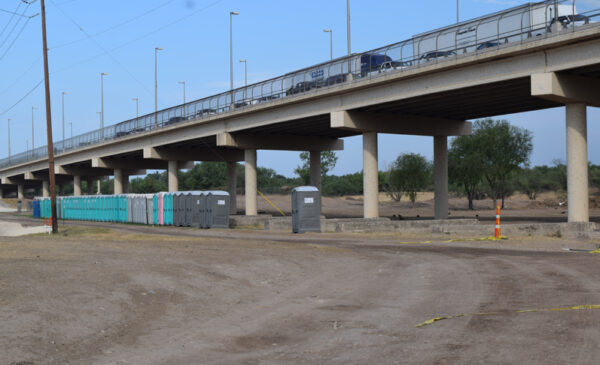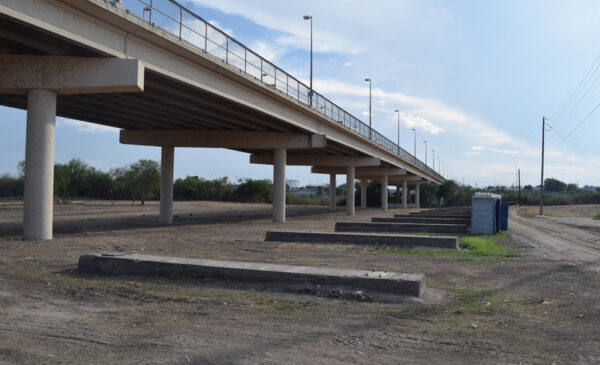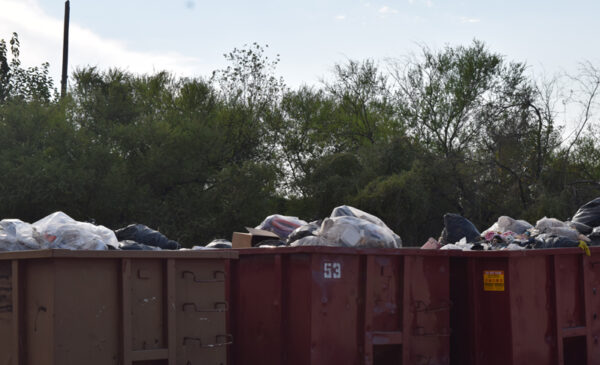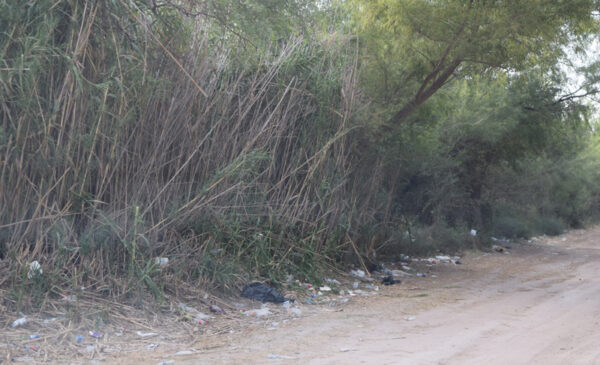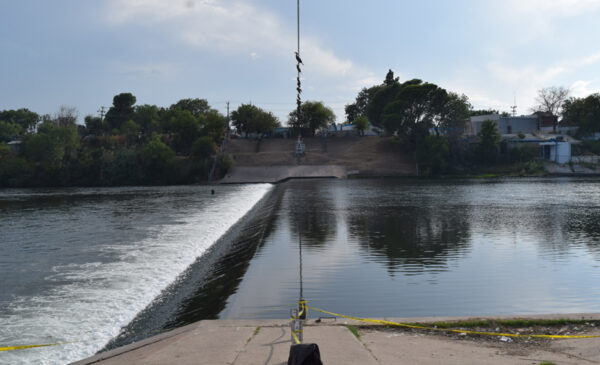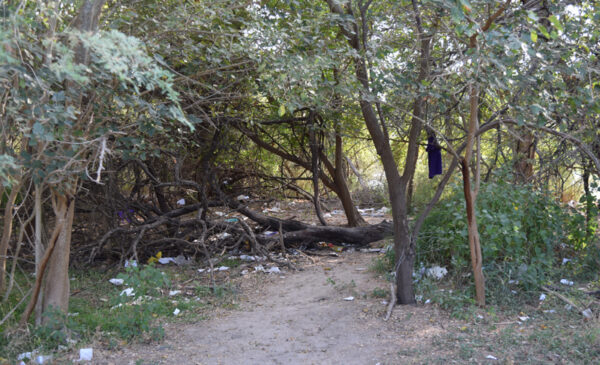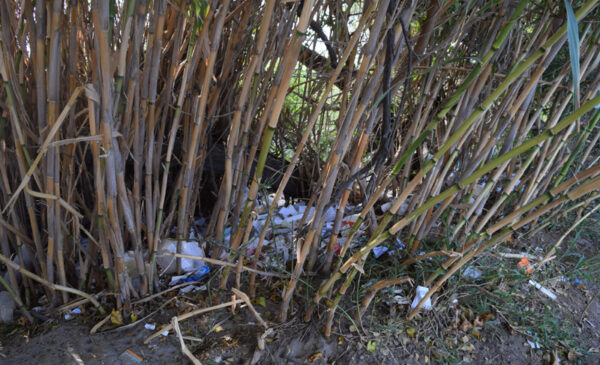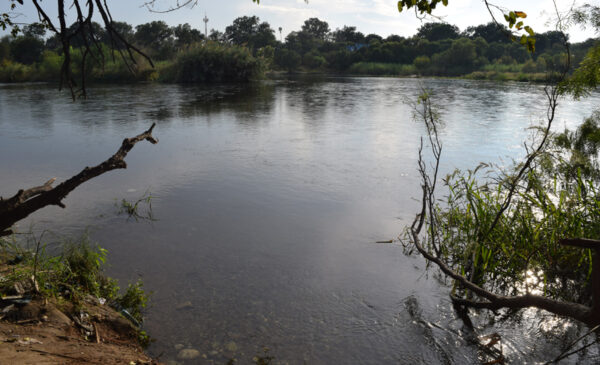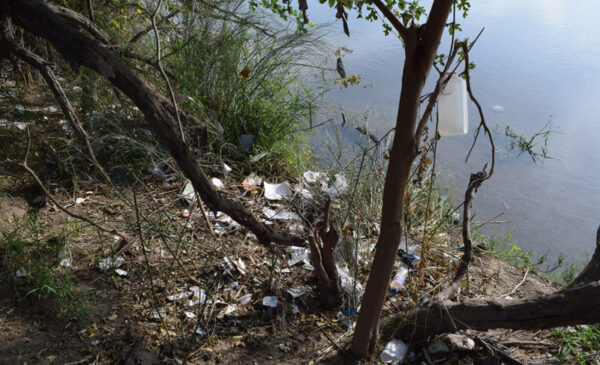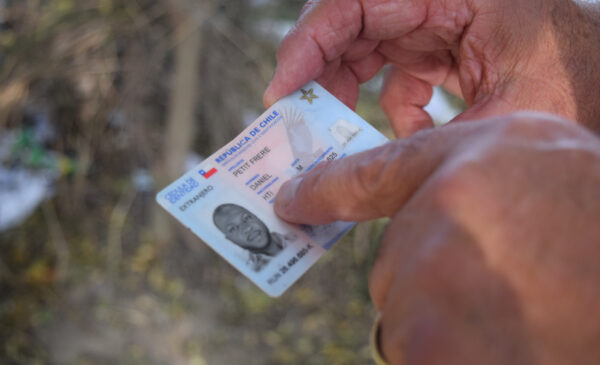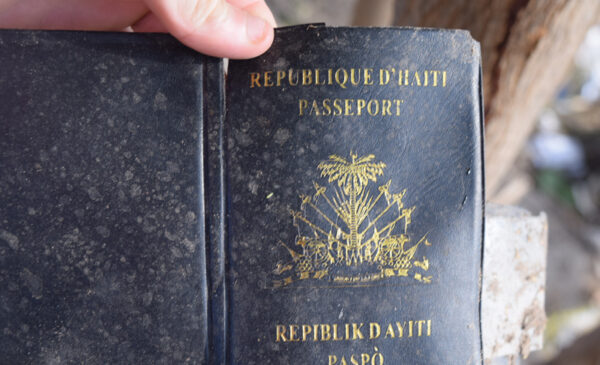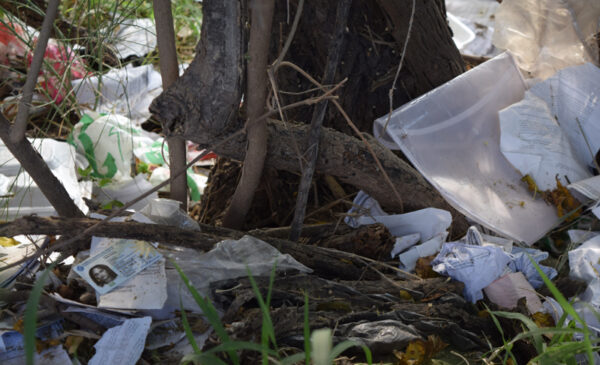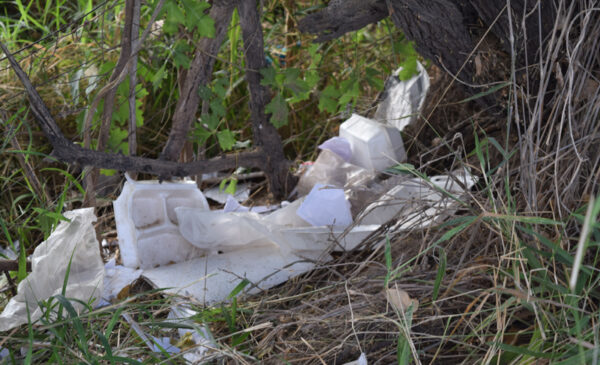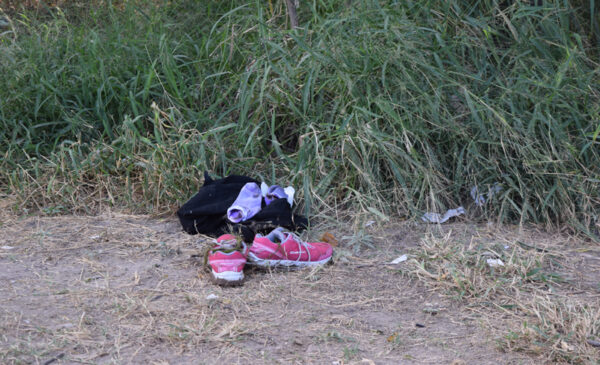DEL RIO, Texas — As a group of migrants filed out of a taxi van at a bus station on Sept. 28, there was one that took longer than the rest. Eventually, he shuffled his way from the back row to the exit, where he was met by the driver in the doorway who told him, “God bless you. May you find a job and a better life here in America.”
The man was from Cameroon, Africa, and he had arrived in the U.S. that morning. He wore a ragged brown leather sandal on his left foot. His right foot, up to his knee, was in a cast, and he used crutches to walk. The other sandal, a cell phone, and a drawstring backpack with a hygiene kit were his only other possessions.
[Related: Diocesan Envoys Travel to Texas To Offer Aid to Haitian Migrants]
“It’s still very, very early in my journey so I don’t want to say anything right now,” said the man, who declined to share his name because of his immigration status. “The only reason the border patrol released me was because of my broken leg.”
The taxi picked up the migrants from the nearby Val Verde Border Humanitarian Coalition (VVBHC), which is the respite center where U.S. Customs and Border Protection brings any migrants they process and release into Del Rio. The organization was an essential part of the response to the border crisis in the city of about 35,000 people.
Last week, Monday-to-Friday, 1,664 migrants came through the shelter, part of the immigration surge that saw 30,000 migrants crossing the Rio Grande River over a two-week stretch. At one point, an unprecedented 16,000 refugees were camped underneath the Del Rio International Bridge. Since then, all migrants have been cleared from beneath the bridge.
Of the 30,000, about 12,400 — mostly Haitians — were released into the U.S., with about 5,000 left to be processed and either released or expelled, according to the latest information issued by U.S. Department of Homeland Security Secretary Alejandro Mayorkas. Migrants that weren’t brought to VVBHC were brought to other cities with larger transportation capabilities.
Still, Tiffany Burrow, the organization’s director of operations told The Tablet that, in response to the 1,664 migrants they saw, they’ve improved the infrastructure of the facility — installing better plumbing, electrical, internet connection, shaded spaces outdoors — in anticipation of the next influx of migrants.
“We have the infrastructure in place already to sustain for the next surge, which is bound to happen; we just don’t have a timeline,” Burrow said.
For the first time, they’ve also added COVID-19 testing to the processing procedures. Throughout the latest surge and before, there was no option to test, so they just took extra precautions with doubling masks and other protocols. Burrow said shutting down the facility because they couldn’t test for COVID wasn’t an option.
Through the latest surge of 1,664 migrants, the organization doubled the number of volunteers it brought in on a daily basis. And they coordinated charters to the Migrant Family Transfer Center in Houston, where migrants could spend the night and receive humanitarian aid before continuing on towards their final destination in the U.S.
Burrow explained that because VVBHC doesn’t have overnight capabilities, the biggest challenge facing local officials was the limited transportation options out of Del Rio, which is why they needed assistance from the Migrant Family Transfer Center. There are only two Greyhound buses a day from Del Rio to San Antonio and limited flights from the small city’s airport.
As for where the migrants are going, Burrow said destinations were nationwide.
“It was never their plan to stay in Del Rio. Their plan is to go to their final destination,” Burrow said. “They travel on, and what’s missing now to this puzzle are the people to welcome them to their new communities, to draw them into churches, to help them transition to their new locations. That’s what people can be focusing on because they’re going all across the U.S.”
By Sept. 28, operations were back to normal at VVBHC with border patrol infrequently dropping off migrants throughout the day. Burrow described the traffic at the center as a constant flow of people coming and going, with very little sitting around.
She said the priority is getting migrants food and water. The facility has water stations and sinks outside and a shower trailer in the back. It is separated into two buildings. One she called the “support building” that contains essential items. The other is the orientation building where the migrants get their travel plans organized and can wait for the taxi.
Each migrant is given food in the form of a sack lunch, Burrow said, and they provide them all with a backpack, hygiene kit, and a bible for their travels. When The Tablet first arrived at VVBHC mid-morning on Sept. 28, there were about 10-15 migrants waiting for a taxi.
On a later visit, there were only two. Both of them — they each declined to share their name due to their immigration status — are originally from Venezuela. After they fled Venezuela they met in Colombia, flew to Mexico, and paid smugglers to get them to the U.S.-Mexico border.
One of them fled Venezuela with his daughter and granddaughter after his son-in-law encountered political problems. He told The Tablet through an interpreter that he wanted to give his daughter and granddaughter a better life.
“I’m older so I don’t really matter, but I wanted to bring my daughter and granddaughter over for their safety,” he said. “Back home I had a business and a good property, but it’s gotten so bad for my family that I wanted to protect them.”
On Sept. 28, his daughter and granddaughter were brought to a different facility after they were all detained by border patrol for processing. He said they’re trying to meet in Houston.
The other man said he fled Venezuela because government agencies were taking more of his income than he needed to sustain himself. He had intended to stay in Colombia, before learning that he would be deported back to Venezuela by the Colombian government, so he decided to come to the U.S.
“I am going to the Chicago area to stay with a friend,” he said through an interpreter. “I’m going to deal with my immigration situation and try to find work.”
Burrow noted that while the situation over the past two weeks was unprecedented, the VVBHC has dealt with surges throughout the year. She said even with the 1,664 migrants they helped over that one week their total number for September is lower than it was in August, when they served 3,649 migrants.
“We haven’t had 16,000 people underneath our international bridge at one time, but we’ve been dealing with big numbers like this all year long,” Burrow said. “This isn’t new for us, it’s just the first time the world is really seeing it.”


